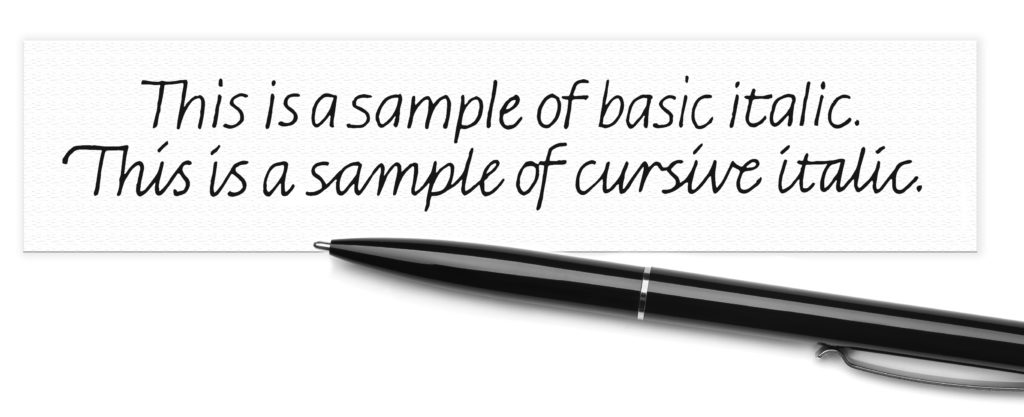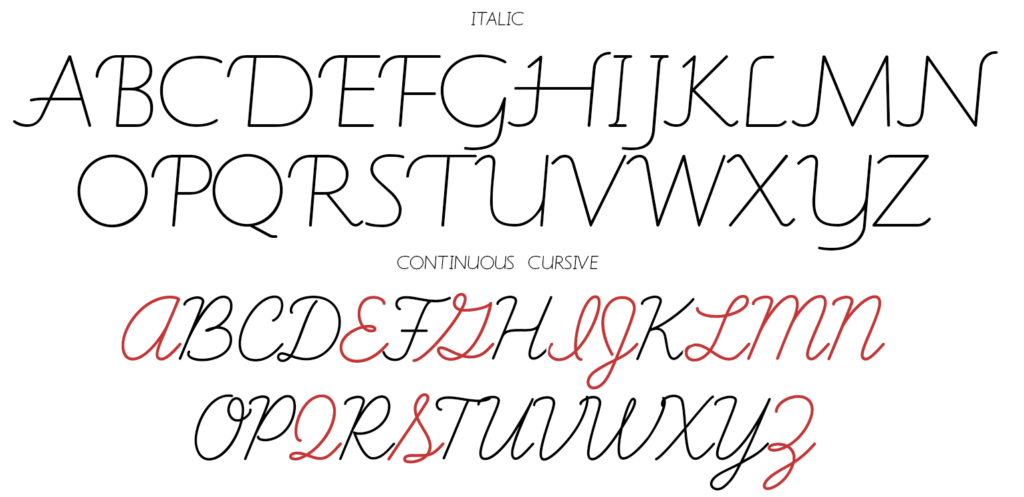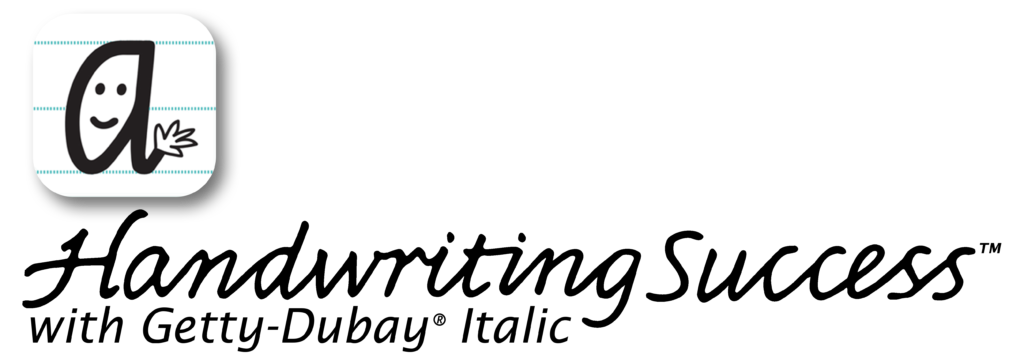Is California’s AB 446 “cursive or joined italics” a new mandate?
No, according to the California Department of Education. Since at least 1999, The California CCSS for ELA/Literacy contains outcomes related to cursive or joined italic for grades three and four. AB 446 copies these existing outcomes to the California Education Code Section 51210(a) , and extends the instructional requirement through 6th grade.
Sources: https://www.cde.ca.gov/ci/cr/cf/cursiveinstrufaqs.asp and https://archive.org/details/lessonplansasses0000unse/page/n3/mode/1up?q=“cursive+or+joined+italic”
What does AB 446 mean for handwriting instruction in California starting January 1, 2024?
California AB 446 amended the California Education Code Section 51210(a) , as indicated in bold text, as follows: “The adopted course of study for grades 1 to 6, inclusive, shall include instruction, beginning in grade 1 and continuing through grade 6, in the following areas of study: (1) English, including knowledge of, and appreciation for, literature and the language, as well as the skills of speaking, reading, listening, spelling, handwriting, including instruction in cursive or joined italics in the appropriate grade levels, and composition.”
Neither the California CCSS for ELA/Literacy nor the California Education Code Section 51210(a) provide a definition of the phrase “cursive or joined italics.”
Are there other states that have similar handwriting requirements?
Yes. West Virginia’s English Language Arts content standards also includes the phrase “cursive or joined italics”. Generally speaking, any requirement for cursive handwriting implies that cursive-mode instruction in any style is suitable, including cursive italic.
What does “cursive or joined italics” mean?
To understand this phrase, it is necessary to separate the three elements “cursive,” “joined” and “italics.”
“Cursive” literally means “running,” and is used to describe a mode of writing where some or all letters are written without lifting the writing tool, and in a flowing manner. Cursive is a handwriting mode, not a handwriting style.
“Joined” letters are written without lifting the writing tool and therefore have additional lines made by the writing tool as it moves from one letter to the next. These additional lines are called ligatures or, more commonly, “joins.” If written in a flowing manner, “joined” and “cursive” mean the same thing.
“Italic” is a style of handwriting. Italics (plural) refers to a style of type. It is a common misnomer to use the word “italics” to signify the italic (singular) style of handwriting. Italic is also called Chancery or modern cursive. It was developed in Italy in the 16th century and used in the first printed handwriting instruction book in 1522.
Sources: “Cursive.” Merriam-Webster.com Dictionary, Merriam-Webster, https://www.merriam-webster.com/dictionary/cursive. Accessed 4 Mar. 2024, “Italic.” Merriam-Webster.com Dictionary, Merriam-Webster, https://www.merriam-webster.com/dictionary/italic. Accessed 26 Feb. 2024, and Britannica, The Editors of Encyclopaedia. “italic script”. Encyclopedia Britannica, 20 Jul. 1998, https://www.britannica.com/topic/italic-script. Accessed 26 February 2024. For “modern cursive” see Primarium, https://primarium.info/handwriting-models.
What is the difference between handwriting and cursive?
“Handwriting” is any writing by hand, and is not specific to the mode or style.
“Cursive” literally means “running”, and is used to describe a mode of writing where some or all letters are written without lifting the writing tool, and in a flowing manner. People have been writing in the cursive mode for at least 2000 years, if not longer. (Learn more here.)
The word “cursive” is sometimes used incorrectly, either to mean handwriting in general or as a shorthand for a 19th-century style of continuously joined writing, now called continuous cursive or looped cursive.
Source: “Cursive.” Merriam-Webster.com Dictionary, Merriam-Webster, https://www.merriam-webster.com/dictionary/cursive. Accessed March 4, 2024.
If “joined” and “cursive” mean the same thing, why specify “joined” italic?
Specifying that italic is joined signifies that the requirement is to teach italic in a cursive mode (commonly called cursive italic) in the appropriate grades. Most educational handwriting styles have two modes — an unjoined mode (called print or manuscript) and a cursive (joined) mode. Italic handwriting allows the student to join letters as appropriate, unlike continuous cursive styles, where the cursive mode has no join options.
Is italic usually not joined?
Italic handwriting can be joined or unjoined. Kindergarten and 1st grade students learn the print (unjoined) mode of italic (sometimes called “basic italic”). Students in 2nd grade and up learn how to join the print mode italic letters they have already learned. The letter paths remain unchanged in the cursive mode, and therefore students in 2nd grade and up have the option to join or not, as appropriate.

How does italic differ from continuous (“looped”) cursive styles?
There are many educational handwriting styles. Most educational handwriting styles have two modes, a print (unjoined) mode and a cursive (joined) mode. Italic styles typically do not change letter paths between these two writing modes. In other words, students learning the cursive mode do not need to relearn the alphabet.
Unlike italic styles, continuous cursive styles have a cursive mode that has few letter paths in common with the print mode. Continuous cursive handwriting styles have as many as 42 new letter paths compared to their respective print mode (image of example letter ‘f’ below: red letters indicate a new letter path in the cursive mode compared to the print mode).

Compare other letters here.
Why teach joined italic instead of continuous cursive?
Curriculum decision makers opt for italic handwriting for a number of reasons:
- Italic builds on previous concepts throughout the student’s formative years. Students learn a print mode of italic in Kindergarten and 1st grade, then in 2nd and 3rd grade learn how to join those letters for the cursive mode of italic.
- The italic style is easier to read, due to its loop-free ascenders and descenders, and use of letterforms that are commonly found it type.

- There is evidence that italic handwriting may have better retention compared to some continuous cursive handwriting styles.
Continuous cursive, by contrast, requires that students abandon the print mode letter paths they learn in Kindergarten and 1st grade, and then relearn the alphabet in order to write in a cursive mode. Some continuous cursive styles require up to 42 new letter paths for the cursive mode. See this Style Comparison Tool to learn more.
What curricula provide instruction in joined italic?
There are several publishers of educational materials for italic handwriting worldwide. Some may indicate that their style is “italic” without actually maintaining the characteristics of the historical italic hand. For this reason, it is important to know some of the features of italic handwriting, in order to assess prospective methods.
In general, italic handwriting:
- Does not use loops or curlicues.
- Has a slight slope to the right of 5 to 15 degrees (measured from vertical).
- Has a capital letter height and ascender height that is 1.5 times the lowercase letter body height.

- Uses lowercase letter proportions that are roughly 2 to 3 (width to height) for most lowercase letters.

- Has the option to use serifs.

- Does not join from capital letters to lowercase.
- Does not include entry strokes in the body of the letter (image below of example letter ‘e’: italic on left, continuous cursives styles on right, entry stroke is indicated with an arrow).

- Does not join out of letters g, j, q or info f.

- Has letters ‘r’ and ‘s’ that are similar to what students see in type.

- Has a letter ‘a’ shape with a semi-flat top.

- The letter ‘a’ shape is shared with d, g, and q and is rotated for b, and p.

- The letter ’n’ shape is shared with h, r, and m, and is rotated for u and y.

- Has no ascender on ‘t’, only a slight rise above the waist-height line.

- Has 20 lowercase letters that are written in one stroke (some italic styles use a two-stroke ‘e’ and/or a one-stroke ‘k’).

- Uses capital letters based on Roman models, similar to what students see in type (image below shows non-Roman capitals in red).

The Getty-Dubay® Italic Handwriting Series for K-6 is an educational handwriting curriculum that contains all these attributes of the italic style. Learn more at handwritingsuccess.com
Font credits: Italic font used is Getty-Dubay® Educational Fonts, continuous cursive font used is Learning Curve by Blue Vinyl Fonts.

